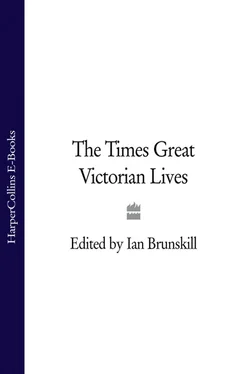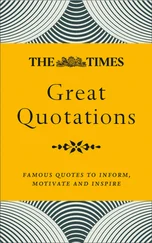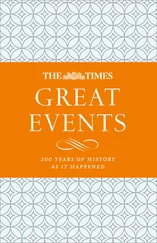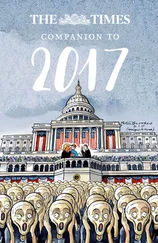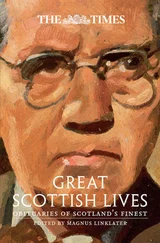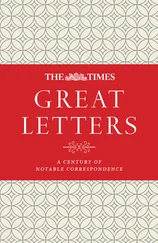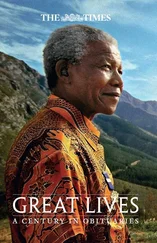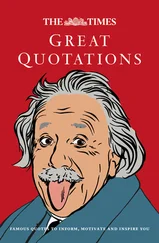The first edition of his System of Logic, the work on which his reputation would be most confidently rested by his admirers, appeared in 1843. ‘This book,’ he says in his preface, ‘makes no pretence of giving to the world a new theory of the intellectual operations. Its claim to attention, if it possess any, is grounded on the fact that it is an attempt, not to supersede, but to embody and systematize the best ideas which have been either promulgated on its subject by speculative writers or confirmed by accurate thinkers in their scientific inquiries.’ It is a book which no one would read for amusement, hardly; indeed, except as a task; his style, always dry, is here at its driest, and the circumstance of the work having reached an eighth edition in 1872 is, therefore, a conclusive proof of its completeness as a system and a text-book. The same praise may be granted to his Principles of Political Economy, from which the existing state of the so-called science may be learnt; but in this work, instead of confining himself to the collection of known and recognized theories or facts, he has propounded sundry doctrines of dangerous tendency and doubtful soundness, which have laid him open to suspicion and attack – for instance, his doctrine of property in land, which, he maintains, is the inalienable inheritance of the human species, and may at any moment be wholly or in part resumed from considerations of expediency.
We need hardly add that many of his opinions on society and government have been generally and justly condemned; and that, in his more appropriate domain of mental and moral philosophy, he was engaged in unceasing feuds. He was, however, the most candid of controversialists, and too amiable to indulge in scorching sarcasm or inflict unnecessary pain. He was often a wrong-headed, but always a kind-hearted man. After conversing with some Oxford tutors in 1863, Mrs. Grote sets down:-
‘Grote and Mill may be said to have revived the study of the two master sciences – History and Mental Philosophy among the Oxford undergraduates. A new current of ideas, new and original modes of interpreting the past, the light of fresh learning cast upon the peoples of antiquity; such are their impulses given, by these two great teachers, that our youth are completely kindled to enthusiasm towards both at the present time.’
Mill’s election for Westminster in 1865 was an honourable tribute to his character and reputation, as his rejection in 1868 was the natural consequence and well-deserved penalty of his imprudence in exhibiting an uncalled-for sympathy with Mr. Odger and otherwise recklessly offending the most respectable portion of the constituency. He was well received in the House of Commons, and, although wanting in most of the physical requisites of an orator, he seldom failed to command attention when he rose. Indeed, he made a better figure even as a debater than was expected from his former appearances in that capacity, and the proof is that a well known writer produced a carefully finished parallel between him and Mr. Lowe apropos of some passages of arms between them during the Cattle Plague debates:-
‘Mr. Lowe takes by preference the keen, practical common-sense view of his subject; Mr. Mill the philosophical, speculative and original view. Mr. Lowe’s strength lies in his acquired knowledge, memory, and dialectic skill; Mr. Mill’s in his intellectual resources and accumulated stores of thought. Their reading has been in different lines, and employed in a different manner; Mr. Lowe being the much superior classic, and Mr. Mill (we suspect) more at home in legislation, morals, metaphysics, and philosophy. Books, ancient and modern, are more familiar to Mr. Lowe, and have been better digested by Mr. Mill. The one has most imagination, the other most wit. The one almost rises to genius, whilst the palm of the highest order of talent must be awarded to the other. The one fights for truth, the other for victory. In conflict it is the trained logician against the matured thinker; not that the logician wants thought, or the thinker logic. A set combat between them would resemble one between the retiarius or netman of the Roman arena and a swordsman; and the issue would depend on whether Mr. Lowe could entangle his adversary in the close meshes of his reasoning by an adroit throw, or whether Mr. Mill could evade the cast by an intellectual bound, close, and decide the contest by a home thrust.’
We do not reproduce this parallel as agreeing with it, but as strikingly presenting some illustrative trait of each.
Of late years Mill has not come before the world with advantage. When he appeared in public it was to advocate the fanciful rights of women, to propound some impracticable reform or revolutionary change in the laws relating to the land; but, with all his error and paradoxes, he will be long remembered as a thinker and reasoner who has largely contributed to the intellectual progress of the age.
This is a deeply grudging notice of the career of a man whose work was to exert a profound influence over succeeding generations. The obituarist evidently draws on Mill’s Autobiography of 1873 but he eschews mention of what latter-day readers might consider his most significant works: On Liberty (1859), Representative Government (1861), Utilitarianism (1863) and The Subjection of Women (1869). Mill had entered Parliament as an Independent MP for Westminster in July 1865. During his time in Parliament he was an outspoken advocate of liberal reform and of women’s rights and acted as a supporter of George Odger, a shoemaker and trades unionist who made five unsuccessful attempts to become a working class MP. In 1851 Mill married the newly widowed Harriet Taylor, with whom he had been intimate for twenty-one years. Her tuberculosis obliged the couple to retire to Avignon for her health. She died there in 1858. Mill is buried beside her.
SIR EDWIN LANDSEER
Painter: ‘His paintings are known … through the length and breadth of the land.’
1 OCTOBER 1873
WE HAVE TO announce, with deep regret, the death yesterday morning, at 10.40, of Sir Edwin Landseer. Sir Edwin had been long known to be in a most precarious state of health, but the news will not the less shock and grieve the worlds both of Art and of Society, in which he was an equal favourite. The great painter never, however, courted publicity; he was singularly reticent about all that concerned himself, and it is astonishing to find how little was known to his contemporaries respecting his early career.
The grandfather of Sir Edwin, we are told, settled as a jeweller in London in the middle of the last century; and here, it is said, his father, Mr. John Landseer, was born in 1761, though another account fixes Lincoln as his birthplace, and his birth itself at a later date. John Landseer became an engraver, rose to eminence in his line of art, became an Associate of the Royal Academy, and, having held that position for nearly 50 years, died in 1852. He was largely employed in engraving pictures for the leading publishers, including Macklin, who engaged him on the illustrations to his ‘Bible;’ this employment led to his marriage with a Miss Pot, a great friend of the Macklins, and whose portrait as a peasant girl, with a sheaf of corn upon her head, was painted by Sir Thomas Lawrence. The issue of this marriage consisted of three daughters and also of three sons – Thomas born in or about the year 1795; Charles, born in 1799; and Edwin, the youngest, in 1802. In 1806 Mr. John Landseer delivered to large audiences at the Royal Institution in Albemarle-street a series of lectures on engraving, in which he laid down broader, higher, and truer views of that branch of art than those which had hitherto prevailed. His name will also be remembered by many as the author or Observations on the Engraved Gems brought from Babylon to England by Mr. Abraham Lockeit in 1817; Saboean Researches, another work on the same subject; and a Description of Fifty of the Earliest Pictures in the National Gallery. He subsequently edited the Review of the Fine Arts and the Probe. Later in life he exhibited at the Academy some water-colour studies from Druidical Temples, and finally engraved his son Edwin’s ‘Dogs of St. Bernard,’ of which he wrote also a small explanatory pamphlet. The chief work, however, of John Landseer lay in bringing up his three sons, of whom the eldest is as well known by his engravings as was his father, and the second was elected keeper of the Academy in 1851. The artistic education of Edwin Landseer was commenced at an early age under the eye of his father, who, after the example of the greatest masters, directed him to the study of nature herself, and sent him constantly to Hampstead-heath and other suburban localities to make studies of donkeys, sheep, and goats. A series of early drawings and etchings from his hand, preserved in the South Kensington Museum, will serve to show how faithful and true an interpreter of nature the future Academician was even more than half a century since, for some of his efforts are dated as early as his eighth year, so that he is a standing proof that precocity does not always imply subsequent failure. Indeed, he drew animals correctly and powerfully even before he was five years old!
Читать дальше
